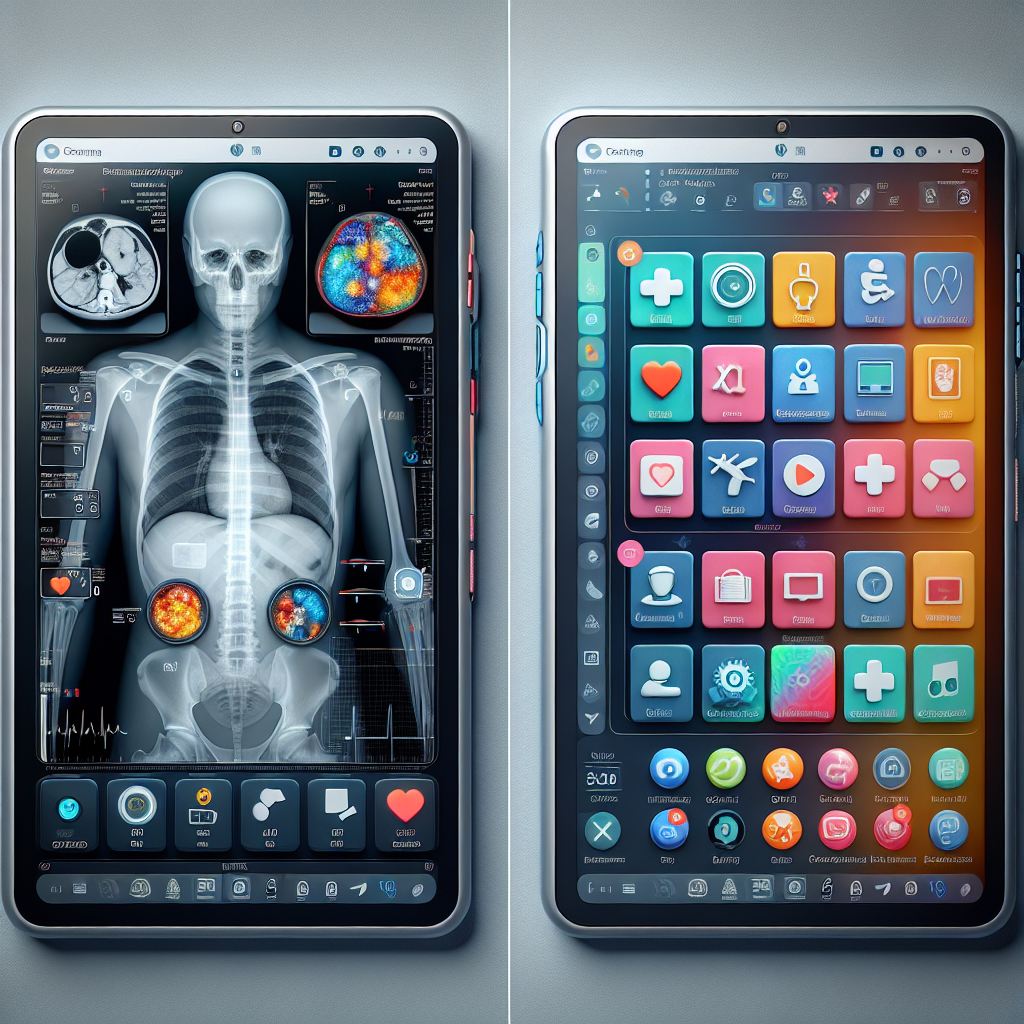In the evolving landscape of healthcare technology, tablets have become invaluable, especially for medical imaging. Unlike everyday consumer models, tablets optimized for medical imaging are engineered with specific features and capabilities to meet the high demands of healthcare professionals.
Key Differences Between Medical Imaging Tablets and Consumer Models
The differences between medical imaging tablets and consumer models can be broadly categorized into several areas such as performance, software, durability, and compliance with healthcare standards.
| Feature | Medical Imaging Tablets | Consumer Tablets |
|---|---|---|
| Performance | High-performance processors and GPUs | Standard processors and GPUs |
| Software | Specialized medical imaging software and apps | General productivity and entertainment apps |
| Display Quality | High-resolution, color accuracy, DICOM compliance | Varying display quality, not DICOM compliant |
| Durability | Rugged, able to withstand harsh conditions | Consumer-grade, less rugged |
| Privacy and Security | HIPAA-compliant, enhanced security features | Standard security protocols |
Performance
Medical Imaging Tablets: These tablets come equipped with high-performance processors and GPUs designed to handle complex imaging software and large data sets. They ensure quick loading times and seamless interaction with medical imagery.
Consumer Tablets: Consumer-grade processors and GPUs are sufficient for everyday tasks such as browsing and streaming but often fall short in performance when running heavy medical applications.
Software
Medical Imaging Tablets: These tablets come pre-loaded with specialized medical imaging software that can analyze, edit, and share medical images. Software often integrates with hospital PACS (Picture Archiving and Communication Systems) for seamless data transfer.
Consumer Tablets: While they may offer some basic imaging apps, consumer tablets lack advanced medical-grade software and the ability to integrate with hospital systems efficiently.
Display Quality
Medical Imaging Tablets: These tablets feature high-resolution screens and exceptional color accuracy, often meeting DICOM (Digital Imaging and Communications in Medicine) standards to ensure the images are true to life.
Consumer Tablets: Display quality varies widely among consumer models, and they do not meet DICOM standards. This makes them less reliable for accurate medical imaging interpretation.
Durability
Medical Imaging Tablets: Built to withstand demanding environments, these tablets are rugged and resistant to dust, water, and drops, ensuring they can operate effectively in clinical settings.
Consumer Tablets: Designed for everyday use, consumer tablets are much less rugged and can easily get damaged when exposed to harsh conditions.
Privacy and Security
Medical Imaging Tablets: These tablets comply with stringent healthcare regulations like HIPAA, ensuring that patient data remains secure. Enhanced security features include encryption and multi-factor authentication.
Consumer Tablets: While they include standard security protocols, they do not meet the comprehensive requirements for healthcare data compliance.
Importance of Optimized Tablets in Medical Imaging
Optimized tablets hold an essential role in modern healthcare for various reasons:
- Accuracy: High-quality displays ensure that medical professionals see images in precise detail.
- Efficiency: Fast processors and dedicated software allow for quicker diagnostic decisions.
- Integrability: Seamless integration with hospital systems enhances workflow efficiency.
- Security: Robust security measures protect sensitive patient information.
- Durability: Built to withstand the demanding healthcare environment, ensuring longevity and reliability.
Conclusions
The advancements in tablet technology have revolutionized the field of medical imaging. Medical imaging tablets stand apart from consumer models with their superior performance, specialized software, high-quality displays, enhanced durability, and stringent security protocols. As the demand for portable and efficient healthcare solutions continues to grow, the importance of using optimized tablets for medical imaging becomes increasingly evident.

